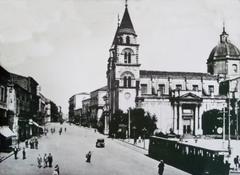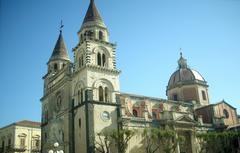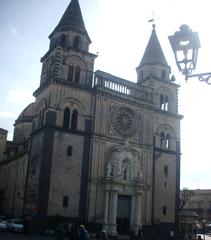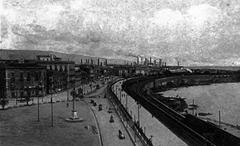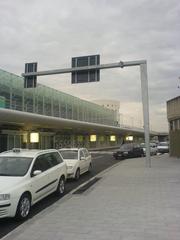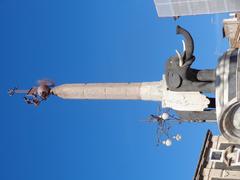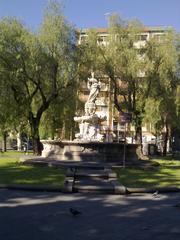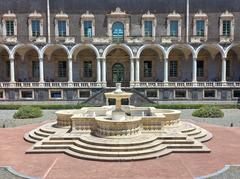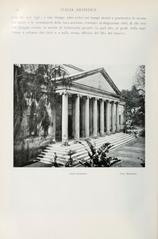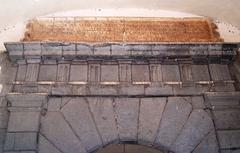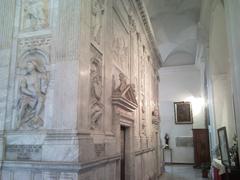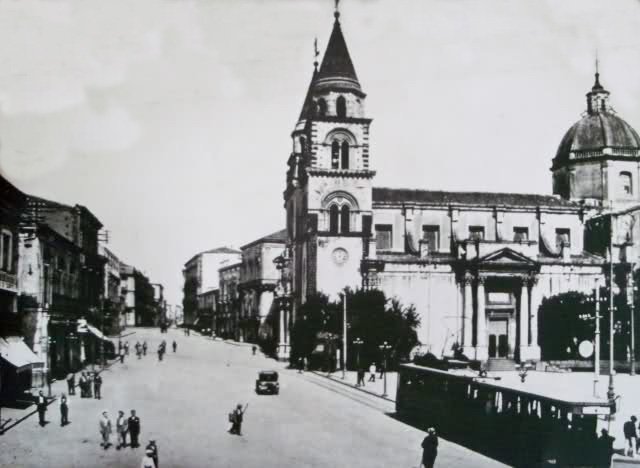
Visiting the Cattedrale di Maria Santissima Annunziata: History, Tickets, and Tips
Date: 18/07/2024
Introduction to the Cattedrale di Maria Santissima Annunziata
The Cattedrale di Maria Santissima Annunziata, also known as the Catania Cathedral, is a remarkable historical and architectural landmark located in the heart of Catania, Sicily. This cathedral stands as a testament to Catania’s resilience and rich cultural heritage, having witnessed and survived multiple natural disasters, including devastating earthquakes and volcanic eruptions from Mount Etna. Its history dates back to the 11th century when it was initially commissioned by Count Ruggero I of Hauteville during the Norman conquest of Sicily. Over the centuries, the cathedral has undergone numerous reconstructions and renovations, evolving through various architectural styles, including Romanesque, Gothic, Renaissance, and Baroque (source, source).
The Catania Cathedral is not only a place of worship but also a symbol of the city’s enduring spirit and its ability to rise from the ashes, much like a phoenix. It houses significant artistic treasures, including the tomb of the famed composer Vincenzo Bellini and a chapel dedicated to Saint Agatha, the patron saint of Catania. Today, the cathedral continues to be a vibrant hub of religious and cultural life, attracting visitors from around the world who come to marvel at its stunning architecture and delve into its rich history (source, source).
Table of Contents
Historical Background
Early Beginnings (11th Century)
The cathedral’s origins can be traced back to 1091, during the Norman conquest of Sicily. Count Ruggero I of Hauteville, the Norman ruler, commissioned the cathedral’s construction upon the ruins of the ancient Roman Baths of Achilles. This strategic decision to build atop Roman foundations was a common practice, symbolizing the Norman’s dominance and the ushering in of a new era. The initial structure, dedicated to Saint Agatha, Catania’s patron saint, was designed in the Romanesque style prevalent during that period.
The Earthquake’s Embrace and a Slow Resurgence (12th - 17th Century)
For over a century, the cathedral flourished as a beacon of faith and Norman power. However, disaster struck in 1169 when a catastrophic earthquake shook Catania, reducing much of the city, including the newly built cathedral, to rubble. The earthquake, a stark reminder of the ever-present power of nature, marked a turning point in the cathedral’s history.
Reconstruction efforts began almost immediately, driven by the unwavering faith of the Catanese people. The rebuilding process, however, was slow and arduous, spanning several centuries. During this period, the cathedral witnessed the changing tides of architectural styles. Gothic elements were incorporated during the 13th and 14th centuries, reflecting the prevailing architectural trends sweeping across Europe. The Aragonese period in the late 15th century saw further additions, including the apse, showcasing a blend of Catalan Gothic and Renaissance influences.
Etna’s Fury and a Baroque Masterpiece (17th Century)
Just as the cathedral neared completion, tragedy struck again in 1669. This time, it wasn’t the earth’s tremors but the fiery wrath of Mount Etna that brought devastation. A massive eruption engulfed Catania in a sea of lava, leaving the cathedral severely damaged. While the lava spared the cathedral’s eastern section, including the apse and the Norman walls, the rest of the structure lay in ruins.
This catastrophic event, however, paved the way for the cathedral’s most dramatic transformation. Reconstruction began in 1687 under the guidance of the renowned Catanese architect, Giovanni Battista Vaccarini, a leading figure of the Sicilian Baroque movement. Vaccarini, drawing inspiration from the grandeur of Roman architecture, envisioned a new cathedral that would rise phoenix-like from the ashes. He retained the surviving Norman apse and incorporated it into a grand Baroque design, characterized by its imposing facade, intricate carvings, and a sense of theatrical drama.
A Symbol of Resilience (18th Century - Present)
The new cathedral, completed in 1768, stood as a symbol of Catania’s resilience and Vaccarini’s architectural genius. The facade, built using white Carrara marble, features a magnificent display of Corinthian columns, statues of saints, and intricate carvings, all contributing to a sense of awe-inspiring grandeur. The cathedral’s interior, equally impressive, houses numerous artistic treasures, including the tomb of the composer Vincenzo Bellini and a chapel dedicated to Saint Agatha, containing her relics.
Over the centuries, the Cattedrale di Maria Santissima Annunziata has witnessed countless events, from religious ceremonies to historical upheavals. It has served as a backdrop for coronations, papal visits, and even survived World War II bombings, further solidifying its status as a symbol of endurance and faith.
Today, the cathedral stands as a vibrant hub of religious and cultural life in Catania. It continues to inspire awe and wonder in visitors from around the world, offering a glimpse into the city’s rich history and its remarkable ability to rise above adversity. The Cattedrale di Maria Santissima Annunziata is not just a place of worship; it is a living testament to the enduring spirit of Catania, a city forever shaped by the forces of nature and the unwavering faith of its people.
Visitor Information
Visiting Hours
The Cattedrale di Maria Santissima Annunziata is open to visitors daily. The typical visiting hours are from 7:00 AM to 12:00 PM and 4:00 PM to 7:00 PM. However, it is advisable to check the official website or contact the cathedral directly for the most up-to-date information, as hours may vary due to special events or religious services.
Ticket Prices
Admission to the cathedral is generally free of charge. However, there may be fees for certain areas or special exhibits within the cathedral. It is recommended to verify this information in advance.
Travel Tips
- Best Time to Visit: Early mornings or late afternoons are ideal to avoid crowds and enjoy a peaceful visit.
- Dress Code: As a place of worship, modest attire is required. Ensure shoulders and knees are covered.
- Photography: Photography is allowed, but flash and tripods are typically prohibited to preserve the artwork.
- Guided Tours: Consider taking a guided tour to gain deeper insights into the cathedral’s history and architecture.
Nearby Attractions
- Piazza del Duomo: The main square in front of the cathedral, featuring the iconic Elephant Fountain.
- Teatro Massimo Bellini: A beautiful opera house named after the famous composer Vincenzo Bellini.
- Via Etnea: A bustling street lined with shops, cafes, and historic buildings, perfect for a leisurely stroll.
Accessibility
The cathedral is accessible to visitors with disabilities. There are ramps and designated areas to ensure a comfortable visit for everyone. For specific needs, contacting the cathedral in advance is recommended.
Conclusion
The Cattedrale di Maria Santissima Annunziata is a must-visit for anyone exploring Catania. Its rich history, stunning architecture, and the stories of resilience it embodies make it an unforgettable experience. Whether you are a history enthusiast, an architecture lover, or a spiritual seeker, the cathedral offers something for everyone. Plan your visit, explore the nearby attractions, and immerse yourself in the vibrant culture of Catania.
FAQ
What are the visiting hours for the Cattedrale di Maria Santissima Annunziata?
The cathedral is open daily from 7:00 AM to 12:00 PM and 4:00 PM to 7:00 PM, but it is best to check for any changes.
How much are the tickets for the Cattedrale di Maria Santissima Annunziata?
Admission is generally free, though certain areas or exhibits may have fees. Verify this information in advance.
Are guided tours available at the Cattedrale di Maria Santissima Annunziata?
Yes, guided tours are available and highly recommended for a comprehensive understanding of the cathedral’s history and architecture.
Summary and Final Thoughts
The Cattedrale di Maria Santissima Annunziata, with its rich tapestry of history and architectural splendor, stands as a beacon of Catania’s cultural heritage and resilience. From its Norman beginnings to its Baroque transformation under Giovanni Battista Vaccarini, the cathedral encapsulates the city’s ability to endure and thrive despite the adversities posed by natural calamities. Its majestic facade, intricate carvings, and sacred spaces offer not just a visual feast but a poignant narrative of faith and endurance (source, source).
For visitors, the Catania Cathedral offers a comprehensive glimpse into the region’s historical and cultural fabric. Whether you are an architecture enthusiast, history buff, or spiritual seeker, the cathedral and its surrounding attractions provide a rich and immersive experience. As you explore the cathedral and the vibrant city of Catania, you will undoubtedly gain a deeper appreciation for the enduring spirit of this remarkable city and its people (source, source).
